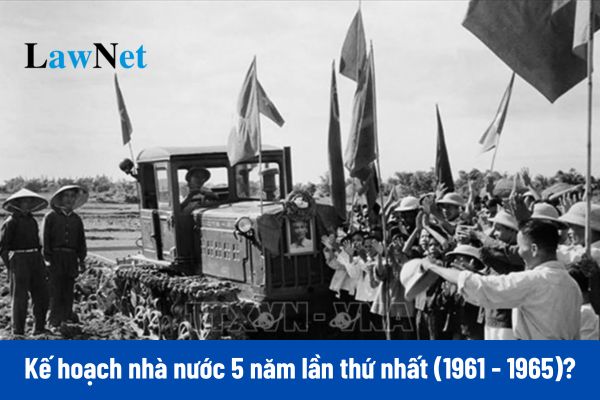What was the focus of the First Five-Year State Plan (1961 - 1965) in Vietnam? What are the duties of students in Vietnam when studying History?
What was the focus of the First Five-Year State Plan (1961 - 1965) in Vietnam?
The Five-Year Plan 1961-1965, officially named the "First Five-Year Plan for National Economic Development (1961-1965)", is the second short-term development plan of the Democratic Republic of Vietnam (the first short-term plan was the Three-Year Plan (1958-1960).
The main directions and objectives of this plan were set out by the Communist Party of Vietnam in September 1960 at the National Representative Conference of the Communist Party of Vietnam. The plan was approved by the National Assembly of the Democratic Republic of Vietnam on May 8, 1963. This plan was not continued as the Vietnam War escalated in 1964. The fundamental task of the State Five-Year Plan 1961-1965 is "to lay the initial foundations of the material and technical base of socialism, initiate a step of socialist industrialization and complete the socialist transformation, advancing the North rapidly, forcefully, and steadily towards socialism."
To be specific, the specific goals were determined as follows:
(1) In terms of economy:
By 1965, the total value of industrial and handicraft production could increase nearly 1.5 times compared to 1960*, with an average annual increase of approximately 20%. Within the total value of industrial and handicraft production, in 1965, the state-owned industry is projected to account for 68.9%, joint ventures and cooperative enterprises 5.3%, and cooperative craft occupations 17.7%. It is estimated that on average annually, the productivity of the state-owned industry sector will increase by about 9%; the basic construction sector by about 6%.
The total value of agricultural production in 1965 could increase by about 61% compared to the planned execution of 1960, with an average annual increase of approximately 10%. The value of production of state farms will increase more than 10 times, accounting for about 5.8%, agricultural production cooperatives about 86.2%, and individual production remaining about 8%.
The average real income of workers and farmers in 1965 is predicted to increase by about 30% compared to 1960.
(2) In terms of culture-social,
the total number of general education students in 1965 will nearly double compared to 1960; the number of intermediate professional students will be 85,000, increasing by more than 1.5 times; the number of university students will be 40,000, increasing more than 2 times. Over five years, there will be nearly 25,000 university graduates and nearly 100,000 intermediate professional graduates.
Thus, the focus of the First Five-Year State Plan (1961 - 1965) is building socialism.
Note: The information is for reference only!

What was the focus of the First Five-Year State Plan (1961 - 1965) in Vietnam? (Image from the Internet)
What are the objectives of the History curriculum in Vietnam?
Based on section 3 of the general education program in History issued with Circular 32/2018/TT-BGDDT amended by Article 2 of Circular 13/2022/TT-BGDDT, the objectives of the History curriculum are:
- To help students develop historical competency, a manifestation of the scientific capacity formed at the secondary school level;
- To contribute to educating the spirit of nationalism, patriotism, the beautiful traditional values of the nation and the cultural essence of mankind, along with qualities and competencies of Vietnamese citizens and global citizens in line with the developmental trends of the era;
- To help students access and clearly understand the role and characteristics of historical science, as well as the connection between history and other scientific fields and professions, creating a basis for students to orient themselves towards future careers.
What are the duties of students in Vietnam when studying History?
According to Article 82 of the Education Law 2019, the specific duties of students in Vietnam when studying History are defined as follows:
- Perform learning and training tasks according to educational programmes and plans, code of conduct of educational institutions.
- Respect teachers, staff and workers of educational institutions; maintain solidarity and mutual support in learning and training; adhere to rules, charters and regulations of educational institutions; and comply with the law.
- Participate in labour and social activities, environmental protection activities appropriate to their age group, health and ability.
- Preserve and protect properties of educational institutions.
- Contribute to the building, protection and development of the traditions of educational institutions.

